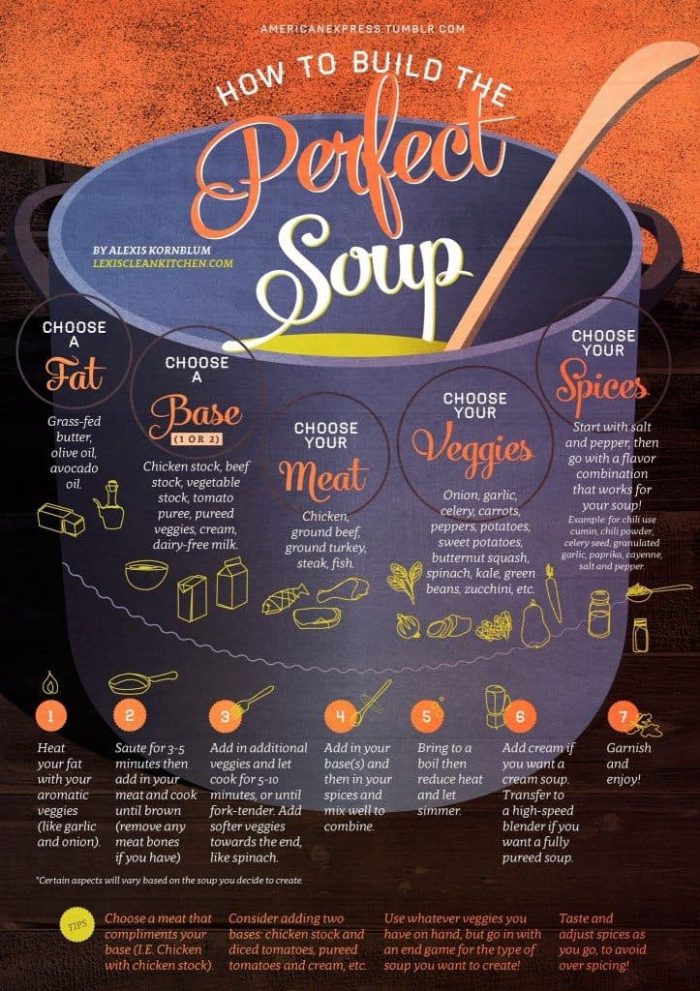
Soup is one of the easiest meals you can make, but it’s also one of the most versatile. There are dozens of different types of soup out there, but no matter what kind you’re making—beef stew or chicken noodle soup—there are some universal rules to follow if you want to get a delicious result every time.
Choose a Fat
When choosing a fat for your soup, you want to make sure that it doesn’t overpower the other ingredients. You also want to choose a fat that will complement those ingredients and add flavor to the soup. For example, if you’re making a tomato soup with basil and garlic, olive oil would be a good choice because it’s mild enough not to clash with those flavors while still adding its own nuances.
Choose a Base
As a beginner, choosing a base for your soup is a great way to get started. Soup bases can be bought or made at home, and they’re a good way to use up leftovers in your fridge. A base will also give you something to work with as you start experimenting with different flavors and ingredients–it’s like having paint on your palette before you begin painting! If you’re willing to invest in some time, making your own stock is incredibly rewarding; however, if time isn’t on your side (or if you don’t have access to bones), many grocery stores sell ready-made chicken broth that’s just waiting for some vegetables and seasonings added into it.
Choose Your Meat
The first step to making a great soup is choosing your meat. Meat is a great source of protein, which makes it an excellent way to add flavor and texture to your soup. You can choose beef, lamb, chicken or pork–or even fish if you prefer seafood! The only thing that matters here is that you like the taste of whatever type of meat you choose (and also make sure it’s not too expensive).
Choose Your Veggies
Choosing the right vegetables is key to making a great soup. For example, if you are making a broth-based soup (like chicken noodle), it’s best to use ingredients with high water content like celery and carrots. On the other hand, if you’re creating a cream based soup (like broccoli cheese), then choose vegetables like potatoes or cauliflower that will give your dish body without adding too much moisture. Vegetables have many different textures and flavors so don’t be afraid of experimenting with different combinations!
Choose Your Spices
When it comes to spices, there are no hard and fast rules. There are some general guidelines that you can use as a starting point when making your soup–for example, using more herbs and less salt is a good idea if you’re trying to cut down on sodium–but ultimately it’s up to you how much spice goes into your soup. The key here is moderation: don’t be afraid of adding flavor with spices but also don’t go overboard! If possible, try only adding one new spice at a time so that you can really experience how each one affects the taste of your dish before moving onto another ingredient. This will help prevent any unwanted surprises (like throwing in too much cumin). There are tons of different types of herbs and spices out there; some work better than others depending on what kind of dish they’re added too or even who’s making them (we all have our own preferences). But there are definitely some standouts when it comes time for seasoning soups like basil leaves for Italian dishes or cinnamon sticks for exotic flavors like curry powder
I hope you’ve enjoyed this look at the science behind soup. Soup is a wonderful meal to enjoy any time of year, but especially in colder weather when you want something warm and filling. I hope that by reading this post, you have gained some insight into how different ingredients work together to create different flavors and textures in your soup pot!
